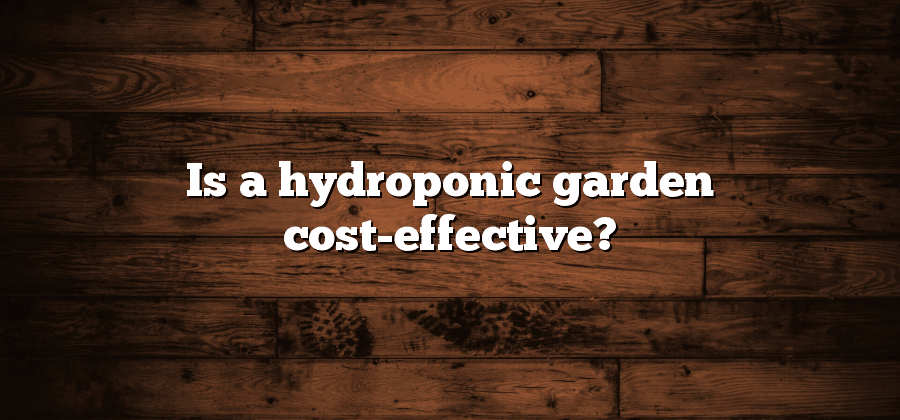Benefits of Hydroponic Gardening
Hydroponic gardening offers a multitude of benefits for both commercial growers and home gardeners. One of the key advantages is the ability to produce higher yields in a smaller space compared to traditional soil gardening. This method eliminates the need for large plots of land, making it ideal for urban areas or those with limited outdoor space. Additionally, hydroponic gardening allows for precise control over the growing conditions, such as temperature, light, and nutrient levels, resulting in faster growth and healthier plants.
Another significant benefit of hydroponic gardening is its water efficiency. Compared to soil-based gardening, hydroponics uses significantly less water. With traditional soil gardening, water is often wasted through evaporation, seepage, or runoff. In contrast, hydroponic systems recycle and recirculate water, reducing water waste and conserving this precious resource. This is especially important in regions affected by water scarcity, as hydroponics can help mitigate water usage concerns while still producing high-quality crops.
Types of Hydroponic Systems
Hydroponic gardening has gained popularity in recent years due to its numerous benefits and the ability to grow plants without the use of soil. One of the key elements of hydroponic gardening is the use of various types of hydroponic systems. These systems provide different methods for delivering water, nutrients, and oxygen to the plants’ roots, creating the ideal growing conditions.
One commonly used type of hydroponic system is the Nutrient Film Technique (NFT). In this system, a thin film of nutrient-rich water continuously flows over the plant roots, providing them with a constant supply of essential nutrients. The NFT system is highly efficient and requires less water compared to traditional soil-based gardening methods. Additionally, its simplicity and effectiveness make it suitable for growing a wide range of plant varieties.
Another popular hydroponic system is the Deep Water Culture (DWC) system. This method involves suspending the plant roots in a nutrient-rich solution, allowing them to absorb the necessary nutrients directly from the water. The DWC system is easy to set up, affordable, and provides excellent oxygenation to the plants’ roots. This makes it a preferred choice for growing leafy greens and herbs, where fast growth and high yields are desired.
These are just two examples of the many types of hydroponic systems available. Each system offers unique advantages and is suited for different types of plants and growing conditions. Whether you choose NFT, DWC, or another type of hydroponic system, the key is to create an environment that optimizes plant growth and maximizes the benefits of hydroponic gardening.
Initial Setup Costs of Hydroponic Gardens
One of the main considerations when starting a hydroponic garden is the initial setup costs involved. Unlike traditional soil gardens, hydroponic systems require specialized equipment and infrastructure. The cost of basic materials such as grow trays, nutrient solutions, pumps, and lighting can vary depending on the size and complexity of the setup. Additionally, there may be additional expenses for ventilation systems, timers, pH meters, and testing kits to ensure optimal conditions for plant growth. It is important to carefully plan and budget for these costs to ensure a successful and sustainable hydroponic garden.
Another factor to consider when calculating initial setup costs is the choice of hydroponic system. There are several types of hydroponic systems available, each with its own cost implications. For instance, a simple system like the Wick System may be more affordable and easier to set up, while a more advanced system like the Nutrient Film Technique (NFT) or the Deep Water Culture (DWC) system may require additional equipment and thus, higher initial costs. It is essential to research and weigh the pros and cons of each system to determine the best fit for your budget and gardening goals. While initial setup costs may seem significant, it is important to remember that hydroponic gardens can provide long-term benefits and savings in terms of water usage, nutrient delivery, and overall productivity.
Comparison of Water Usage in Hydroponic and Soil Gardens
Hydroponic gardening is a unique and innovative approach to growing plants without the use of soil. Instead, plants are grown in a water-based nutrient-rich solution that provides them with all the necessary elements for growth. One of the major advantages of hydroponic gardening is the significant reduction in water usage compared to traditional soil gardening methods.
In traditional soil gardening, water is often wasted due to evaporation, runoff, and inefficient absorption by the plants. In contrast, hydroponic systems are designed to minimize water loss and maximize water efficiency. The water used in hydroponic systems is recirculated, meaning it is continuously reused, reducing the amount of water needed for plant growth. This not only conserves water but also reduces the overall environmental impact of gardening.
Effectiveness of Nutrient Delivery in Hydroponic Gardens
Hydroponic gardening, with its soil-free system, offers a remarkably effective nutrient delivery system for plants. Unlike traditional gardening methods, where nutrients are delivered through the soil, hydroponics harnesses the power of water to deliver a precisely controlled blend of nutrients directly to the plant roots. This targeted delivery method ensures that plants receive the essential elements they need in the most efficient and effective manner possible.
By providing a nutrient solution directly to the roots, hydroponic systems eliminate the process of nutrient uptake by plants through the soil. This elimination of the intermediary step boosts the efficiency of nutrient delivery, allowing plants to absorb and utilize the necessary elements more readily. As a result, hydroponic gardens often experience faster growth rates and increased yields compared to traditional soil-based gardening methods. The effectiveness of nutrient delivery in hydroponic gardens also minimizes the risk of nutrient deficiency, ensuring that plants have a constant supply of the vital elements they need to thrive.






